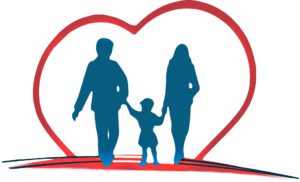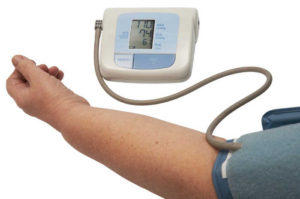Ask Mr. Pedometer and Friends…
Q: Mr. Pedometer, you’ve talked a lot about being active to help prevent Type 2 Diabetes, Heart Disease and High Blood Pressure but can you tell us what we can do to protect our eyes?
A: That’s a good question. Below are some myths and truths about protecting your eyes and while I haven’t read about the role Physical Activity plays in eye health, I have been told in the past that “increased blood flow” is good for your eyes. See the myths and truths about eye health below from Harvard Medical School.
5 truths about protecting your eyes
Of your five senses, which one are you most afraid of losing?  If you’re like most people, your answer is your ability to see. Because our eyesight is so precious, it’s no wonder that myths abound about your eye health, what can damage our eyes —, and what can protect them. Here, we debunk five common myths — and tell you how to truly keep your eyes healthy.
If you’re like most people, your answer is your ability to see. Because our eyesight is so precious, it’s no wonder that myths abound about your eye health, what can damage our eyes —, and what can protect them. Here, we debunk five common myths — and tell you how to truly keep your eyes healthy.
Myth: Doing eye exercises will delay the need for glasses.
Fact: Eye exercises will not improve or preserve vision, help your eye health, or reduce the need for glasses. Your vision depends on many factors, including the shape of your eyeball and the health of the eye tissues, neither of which can be significantly altered with eye exercises.
Myth: Reading in dim light will worsen your vision.
Fact: Dim lighting will not damage your eyesight or eye health. However, it will tire your eyes out more quickly. The best way to position a reading light is to have it shine directly onto the page, not over your shoulder. A desk lamp with an opaque shade pointing directly at the reading material is ideal.
Myth: Carrots are the best food for the eyes.
Fact: Carrots, which contain vitamin A, are indeed good for the eyes. But fresh fruits and dark green leafy vegetables, which contain more antioxidant vitamins such as C and E, are even better for eye health. Antioxidants may even help protect the eyes against cataracts and age-related macular degeneration. Just don’t expect them to prevent or correct basic vision problems such as nearsightedness or farsightedness.
Myth: It’s best not to wear glasses or contact lenses all the time. Taking a break from them allows your eyes to rest.
Fact: If you need glasses or contacts for distance or reading, use them. Not wearing your glasses will strain your eyes and tire them out instead of resting them. However, it will not worsen your vision or lead to eye disease.
Myth: Staring at a computer screen all day is bad for the eyes.
Fact: Using a computer does not damage your eye’s health. However, staring at a computer screen all day can contribute to eyestrain or tired eyes. People who stare at a computer screen for long periods tend not to blink as often as usual, which can cause the eyes to feel dry and uncomfortable. To help prevent eyestrain, adjust the lighting so it doesn’t create a glare or harsh reflection on the screen, rest your eyes briefly every 20 minutes, and make a conscious effort to blink regularly so that your eyes stay well lubricated.
For more information about keeping your eyes healthy, read The Aging Eye, a Special Health Report from Harvard Medical School.
Warning signs of a serious eye problem
Eyes aren’t exempt from the wear and tear of aging. Some of the age-related  changes in the eyes are annoying but not serious — for example, it can become difficult to focus on near objects, and eyelashes may thin out a bit. But other changes can be serious eye problems that threaten vision.
changes in the eyes are annoying but not serious — for example, it can become difficult to focus on near objects, and eyelashes may thin out a bit. But other changes can be serious eye problems that threaten vision.
With age, the eyes’ ability to stay lubricated starts to wane. This can leave eyes feeling irritated, sticky, dry, or gritty. The lens of the eye can become less elastic. Night vision may also start to suffer, which can pose problems when driving at night. In contrast, cataracts, macular degeneration, and diabetic retinopathy can rob you of your sight.
How do you know if an eye problem is a nuisance or the start of something serious? The following signs and symptoms warrant a call to your doctor. Catching serious eye problems early can help preserve your vision. Even non-vision-threatening eye problems can be treated to keep your eyes comfortable and your eyesight as sharp as possible.
Call your doctor if you experience any of the following:
- Change in iris color
- Crossed eyes
- Dark spot in the center of your field of vision
- Difficulty focusing on near or distant objects
- Double vision
- Dry eyes with itching or burning
- Episodes of cloudy vision
- Excess discharge or tearing
- Eye pain
- Floaters or flashers
- Growing bump on the eyelid
- Halos (colored circles around lights) or glare
- Hazy or blurred vision
- Inability to close an eyelid
- Loss of peripheral vision
- Redness around the eye
- Spots in your field of vision
- Sudden loss of vision
- Trouble adjusting to dark rooms
- Unusual sensitivity to light or glare
- Veil obstructing vision
- Wavy or crooked appearance to straight lines
For more information about preventing and treating eye disease, read The Aging Eye, a Special Health Report from Harvard Medical School.

 suggesting that you eat frozen food (March 6 – also Oreo Cookie Day), meatballs (9th), pancakes (12th), potato chips (14th), artichokes (with corn dogs? Both on the 16th), poultry (19th), French bread (21st), cheese steaks (24th),waffles (25th), followed by spinach (26th).
suggesting that you eat frozen food (March 6 – also Oreo Cookie Day), meatballs (9th), pancakes (12th), potato chips (14th), artichokes (with corn dogs? Both on the 16th), poultry (19th), French bread (21st), cheese steaks (24th),waffles (25th), followed by spinach (26th). Here is a good one to celebrate. Coming up next month is National Walking Day on April 6
Here is a good one to celebrate. Coming up next month is National Walking Day on April 6




 changes in the eyes are annoying but not serious — for example, it can become difficult to focus on near objects, and eyelashes may thin out a bit. But other changes can be serious eye problems that threaten vision.
changes in the eyes are annoying but not serious — for example, it can become difficult to focus on near objects, and eyelashes may thin out a bit. But other changes can be serious eye problems that threaten vision.